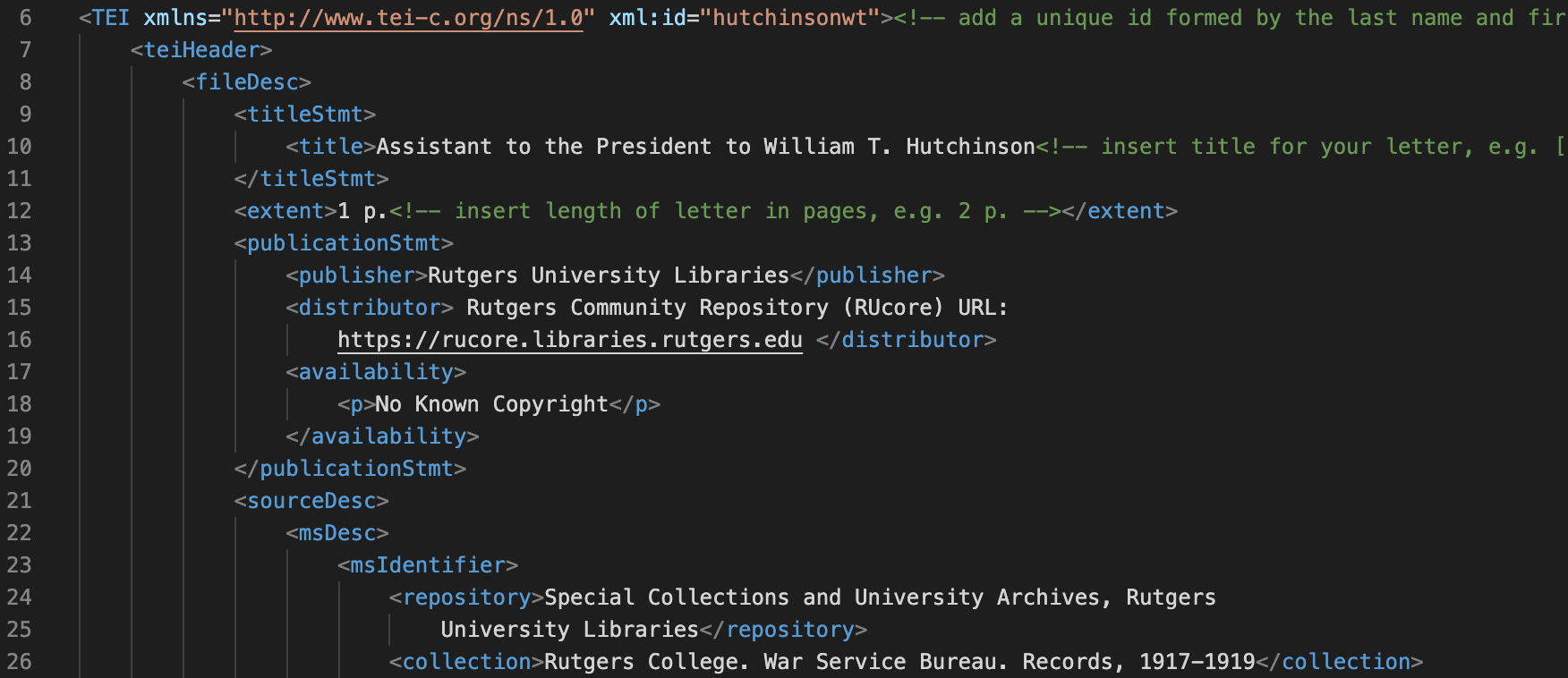Blog Post #2
Text Encoding Project
Method of Lab
The purpose of this lab was to transcribe letters to and from Alumni of Rutgers University in XML format. This method is good because it not only keeps a record of the letters digitally which will last a lot longer than the physical copies, but it also keeps them in the same format as others which would probably make facilitate understanding the different elements of the letters.
 ___
___
Patterns and trends
Reading through letters, we could see that William T. Hutchinson was a relatively high-ranking status of lieutenant during World War I. In one letter he recounts an interaction that he had with some Germans. Another pattern I noticed is that Hutchinson may have adopted the nickname “Squirrel” as he refers to himself by that in some of his letters.

 ___
___
My thoughts
I found the process compelling because it was interesting to see the different tags and elements of the XML code that formatted everything that I input. Its interesting to imagine that every single site on the internet has something similar in the form of a computer language. Something that is difficult to understand by humans can be displayed into something (by computers) that is easily understandable by humans. ___
Any failures or difficulties
Not much failed but there were some cases where I had to look further into documents to clarify any information I saw about William. T. Hutchinson. Also there were some syntax rules that I didn’t understand until further review. ___
Any relation with articles?
My findings relate to the reading by showing how XML language can be useful to document articles or handwritten pieces. Especially when there is a set format it makes it easier to organize. I could relate this project to HTML when I wrote a mockup for a website which require a lot of tags and elements to have formatting in the page.
Guest post by: Jonathan Van